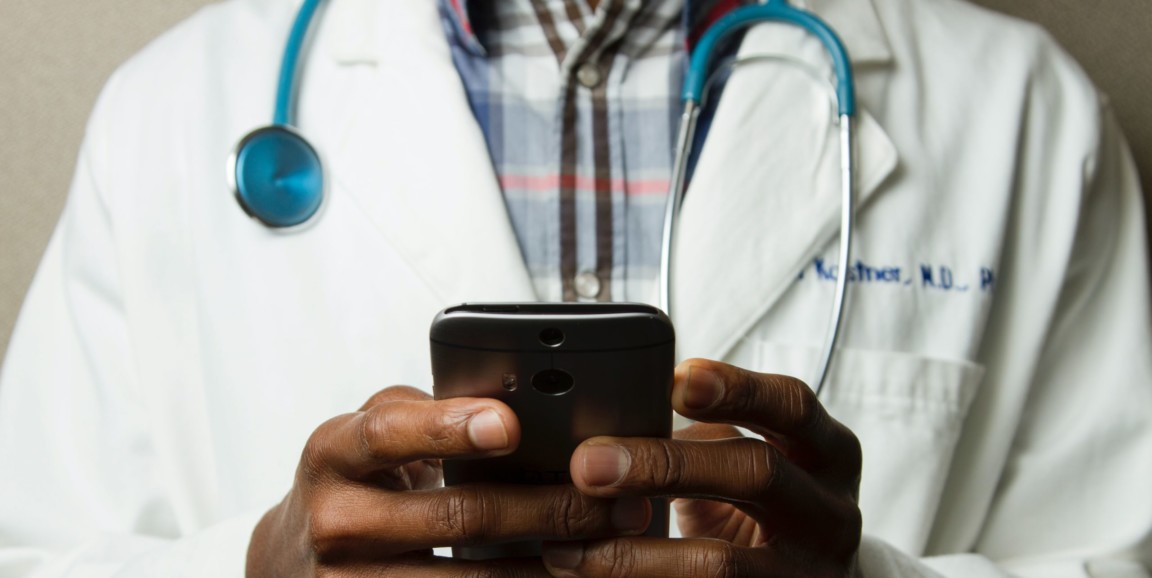At the beginning of the coronavirus pandemic, clinical trials came to a screeching halt.
But as researchers and doctors have gained a better understanding of SARS-CoV-2, the virus that causes COVID-19, they've found ways to resume essential clinical trials that help establish treatments for sick patients.
"As we navigate this new era, we're constantly assessing the risks and benefits of how we're adapting to the pressures and restrictions of COVID-19," Ruth O'Hara, PhD, Stanford Medicine's senior associate dean for research, told me. "Our thinking on this is to prioritize patient safety, while recognizing that in-person visits -- and clinical trials -- are still at the heart of clinical research, ultimately translating into state-of-field patient care. So we needed to find ways to achieve our clinical research mission during the pandemic."
Adding telehealth to clinical trials
In some cases, researchers have used a hybrid approach in which they conduct some aspects of their trials remotely and other aspects in person.
"It's a balance," said Sharon Sha, MD, Stanford clinical associate professor of neurology and neurological sciences. "Every clinical trial has its own protocol, so every trial follows a sort of ad hoc model in how they adjust."
Sha oversees several clinical trials for patients with Alzheimer's disease. Brain scans and drug infusions are often required, so it would be difficult to convert the trials to a completely virtual format, she said.
Still, her team has taken advantage of digital tools. They started using telehealth to take patient histories, collect patient consent and even conduct remote cognitive and neurological examinations, such as evaluating patients' eye movements, facial movements, reflexes and how they walk.
Prior to the pandemic, researchers hesitated to conduct cognitive assessments remotely because these assessments are among the main ways doctors measure whether a drug is helping, Sha said. But when the pandemic started, gaps appeared in research data because patients didn't want to go into clinics or because many sites had in-person restrictions.
"The digital adjustments that are in place now allowed us to gain that data back and offer more flexibility to our patients," Sha told me.
An all-digital clinical trial
While some researchers had no choice but to gather data in person, others, like Rajesh Dash, MD, PhD, have taken their clinical trials full-virtual.
According to Dash, a Stanford associate professor of medicine, when the pandemic hit, he was already working on a new project that would be among the first all-digital clinical trials.
His study tracks the medication-taking habits of about 100 patients with atrial fibrillation, a condition that causes irregular heartbeats. But the trial doesn't measure the effectiveness of the drugs, which are already approved and on the market.
Instead, Dash's team is examining how engaged patients are in an all-virtual trial, using their medication adherence as the gauge.
The ultimate goal is to show that an all-virtual clinical trial is feasible and that trials can reach a broader patient population when not restricted by location. Dash also hopes his research will improve efforts to include a more diverse population in clinical trials and expand access to potentially life-saving drugs.
To support the project, the researchers built a customized all-in-one mobile app that walks patients through every step of a typical clinical trial, including administering surveys, televisits, data collection and more. The team has even equipped participants with home sensors to collect EKG and blood pressure data, all of which integrate automatically into the mobile app. This data is a critical element that unlocks a world of possibilities for future, large scale clinical trials, Dash said.
"The hope is that we can use this study as a proof-of-principle to show that it's possible to conduct an all-virtual trial, and then lend the model, or elements of it, to other trials that could benefit from a digital-first approach," Dash told me.
Like Dash, Sha also said that she can see how virtual medicine could change the face of clinical trials.
"In-person visits will still be central to our trials, but maybe telemedicine can cut the in-person visits by half or more," she said. "That could go a long way toward making trials more accessible and less burdensome for both the research side and the patients."
Photo by National Cancer Institute




